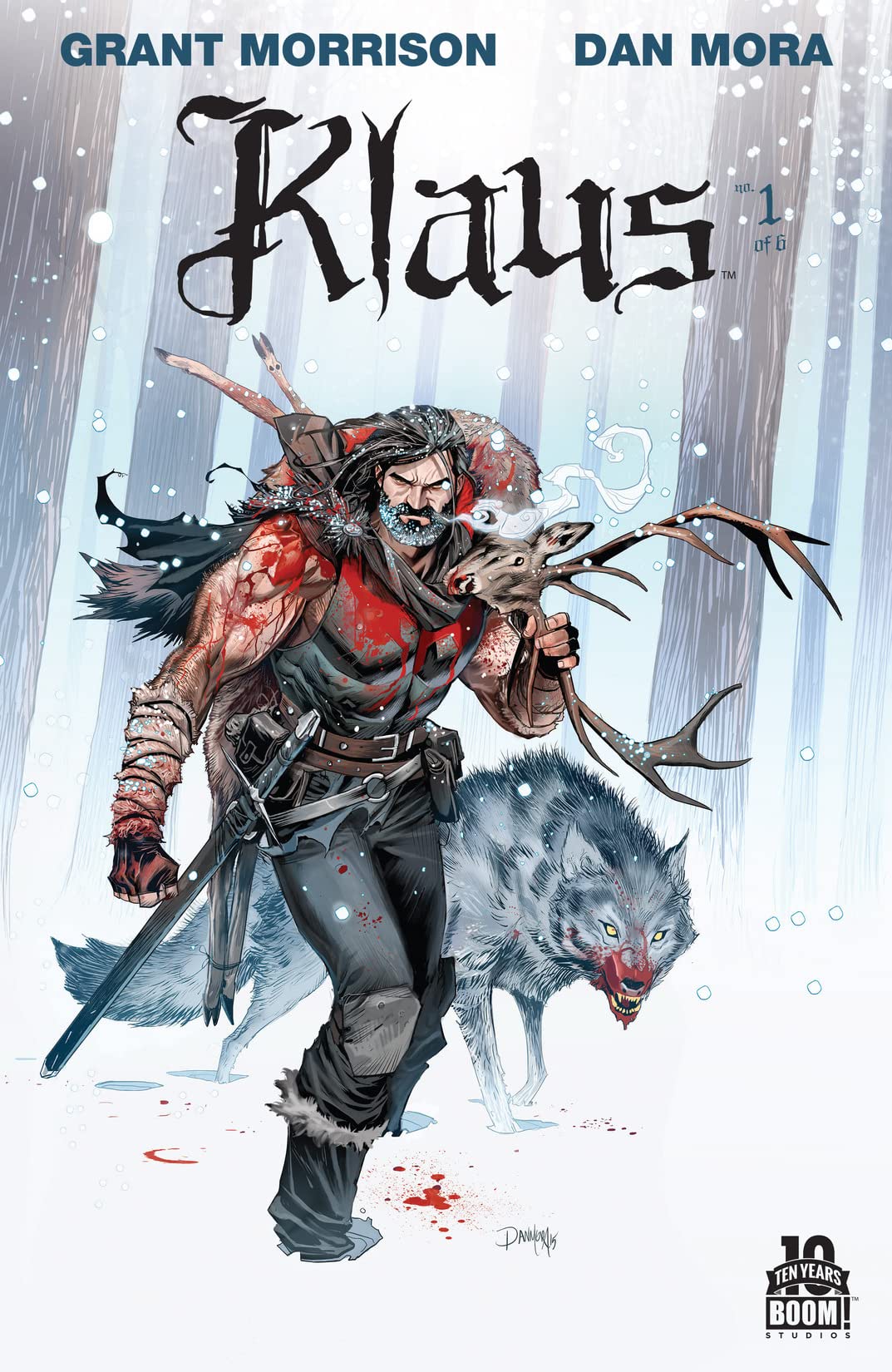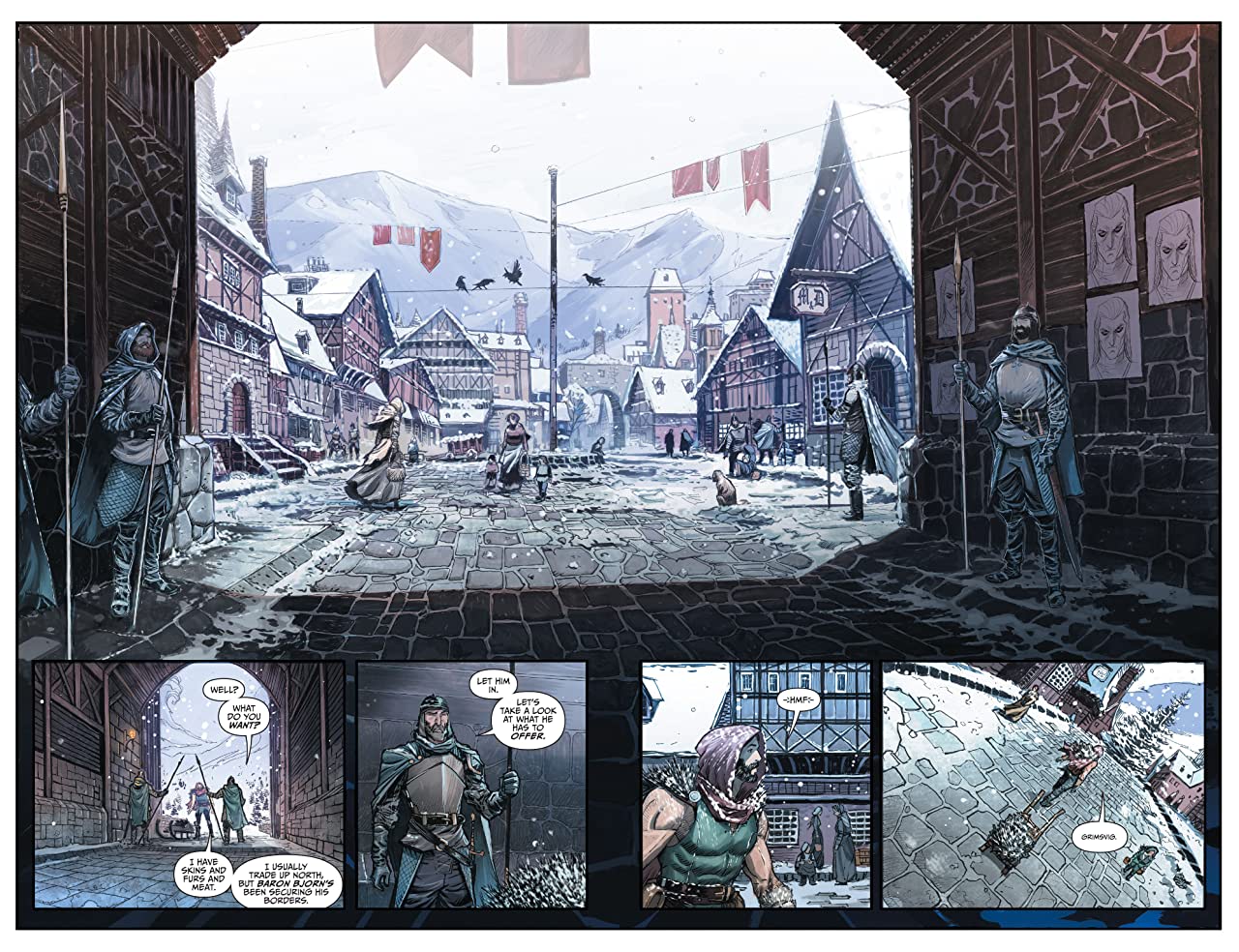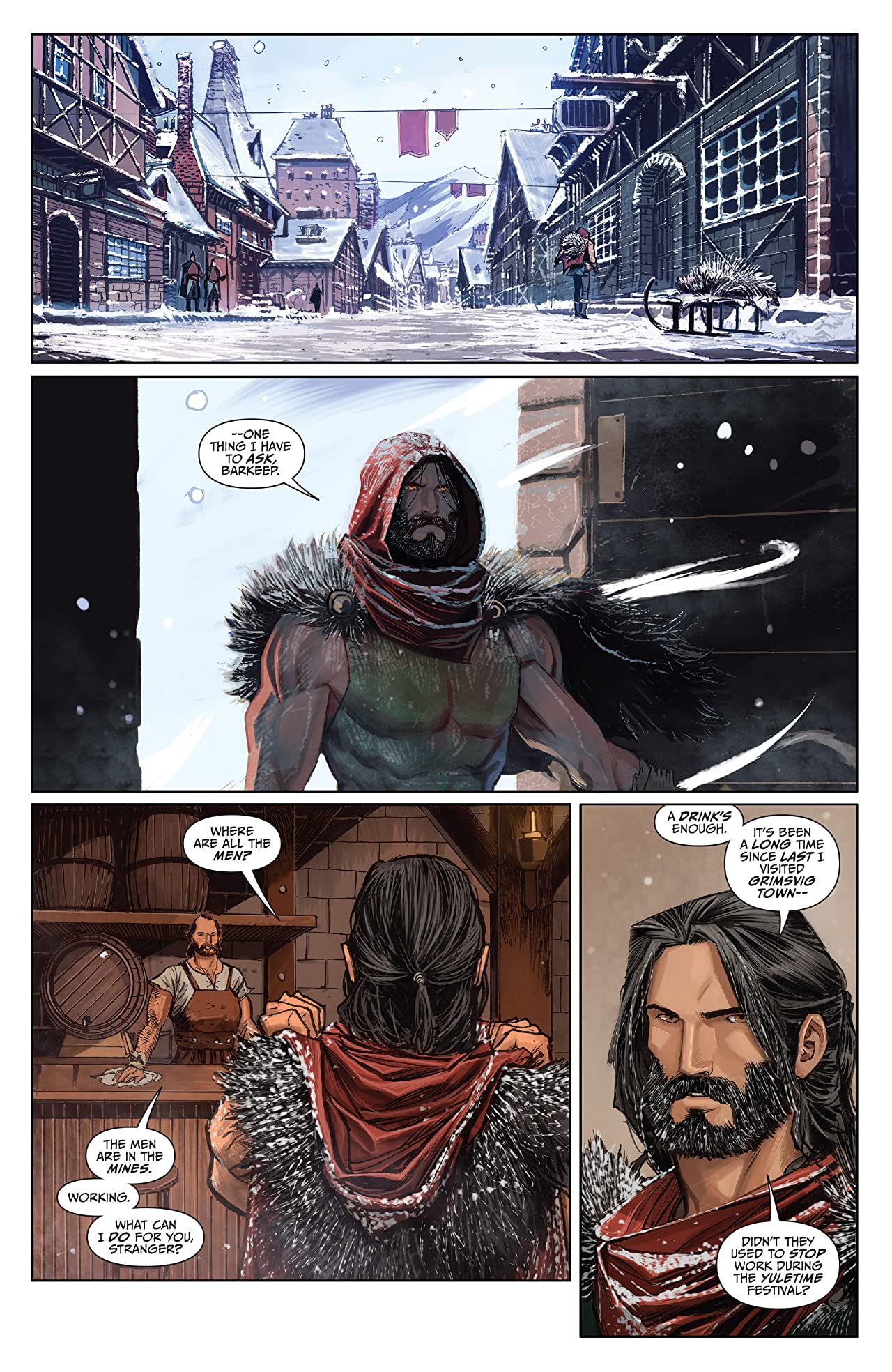Best Shots review: Klaus #1 is Santa Claus: Year One
Looking back at Grant Morrison an Dan Mora's holiday anti-hero

Saint Nicholas. Sinterklaas. Father Christmas. Santa. Versions of the myths and legends have existed for centuries, with modern versions combining several of these representative symbols together to form the jolly bearded fat man that we are most familiar with. Brian Joines and Dean Kotz took a comedic view of the Secret Society of Santa Clauses in Krampus, skinning the surface of how many versions of the story there actually are. This confluence of mythologies is the space that writer Grant Morrison thrives in, and Klaus acts as a kind of 'Santa Claus: Year One.'
Written by Grant Morrison
Art by Dan Mora
Lettering by Ed Dukeshire
Published by Boom! Studios
'Rama Rating: 10 out of 10
Drawing principally upon the Scandinavian traditions and settings, Morrison casts his Klaus as an outsider 'wild man' in the town of Grimsvig. The town is an unhappy and unwelcoming place, thanks largely to Lord Magnus and bratty young Master Jonas who demand all the resources they gather or produce. Toys are banned except for those that go to the young Jonas, and the villagers chase the stranger Klaus out of town for simply being an outsider. The fact that he hunts with a massive white wolf isn't doing him any favors with the suspicious crowd either. It's a bold move from the start, casting the would-be hero, beloved by children the world over, as a 'tough as nails' badass who can take an arrow to the shoulder and keep on ticking.

While this may not be as unapologetically mean-spirited as Morrison's last Christmas outing (the sublimely surreal Happy!), there was very little chance this was ever going to be a Rankin-Bass claymation outing. 'Year One' is an apt description on a number of levels, and as strange as it sounds there are certain parallels between Jim Gordon (or Bruce Wayne) in Frank Miller's Batman: Year One story and Morrison's Klaus. Both stories see soon-to-be-mythical figures enter a corrupt town and instantly find themselves embroiled in the protection of the innocent at a personal cost. There is a sequence of symbolic mystical awakening, at which point the totems of Klaus' destiny are displayed before him. This is a symbol just as powerful as the bat in the making of another costumed figure, which is where Morrison sees the Klaus of this story: as a legendary hero in the making.
From the epic opening double-page spread of a frozen landscape, Klaus standing like a Mad Max figure of the wasteland in its wake, Dan Mora immediately makes a strong impression. The Hexed artist brings the grace of a historic painting and the grandeur of an interactive open-world environment to the page. Every other page is seemingly a startling splash, with a bustling village square quickly following the snow-capped opening, and an amazing sequence of the wild Klaus bringing down an elk alongside his giant wolf. Yet most impressive is the aforementioned awakening sequence, a synesthetic explosion of color that is like a rainbow oil slick on the surface of water brought to life and set to music.

Klaus #1 preview


It is early days yet in this six-issue limited series, leaving us with a key moment in the origin story of Santa. Like many of Morrison's works, this first issue presents us with a series of puzzle pieces. We know roughly what it is supposed to look like by the end of the run, but the joy of getting will be in seeing how he fits all of these disparate threads together and wraps them up in a bow.
Klaus is available now in print and digitally. Read our list of the best comic readers for Android and iOS devices.
Get the best comic news, insights, opinions, analysis and more!
Richard is a culture journalist covering comics and film. He's written for Newsarama for a number of years. Based in Australia, Richard is the editor of The Reel Bits, and is writing a novel called Moving Target.


